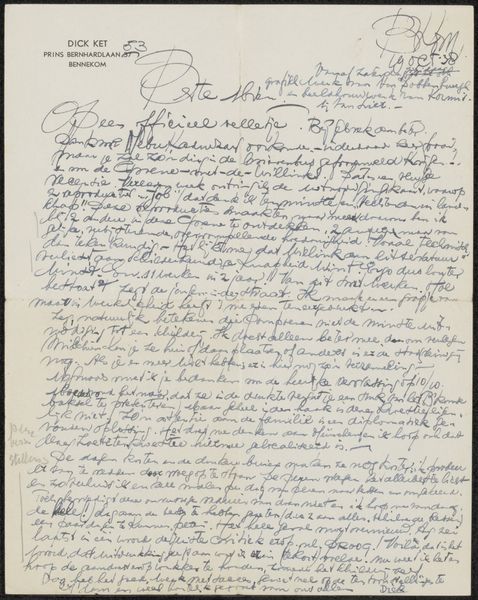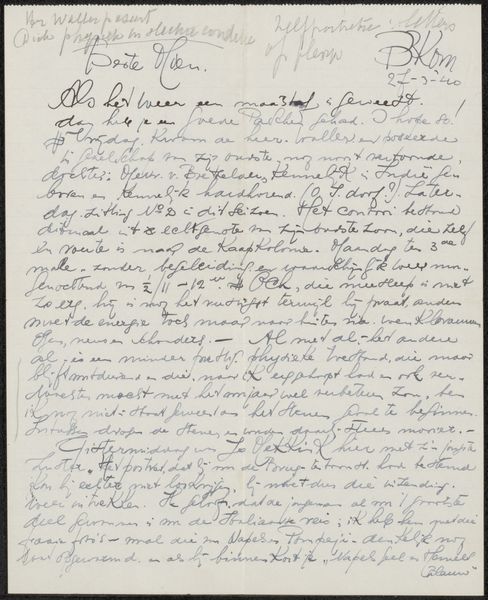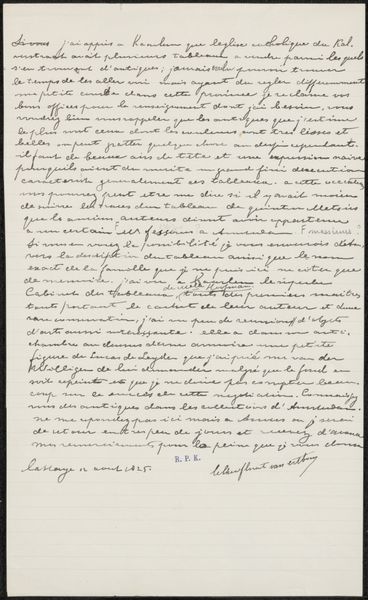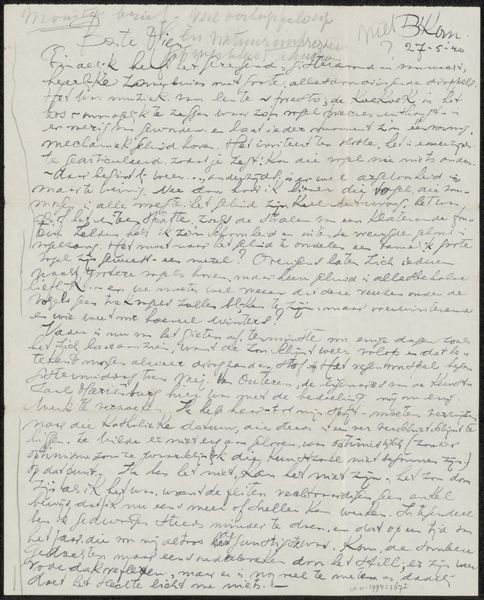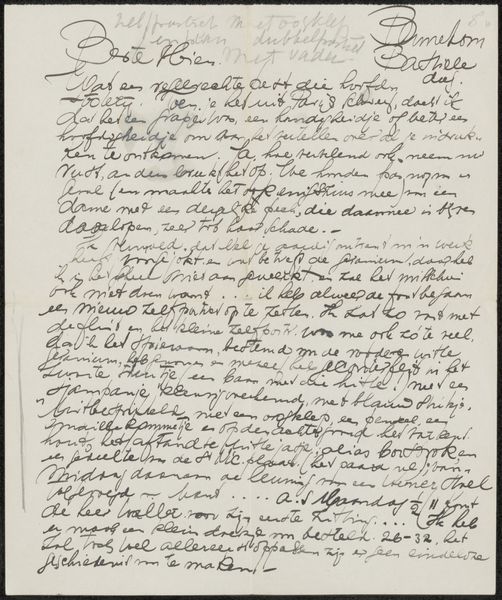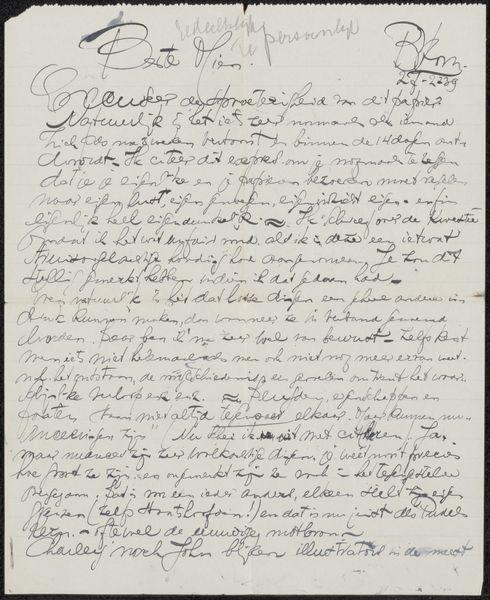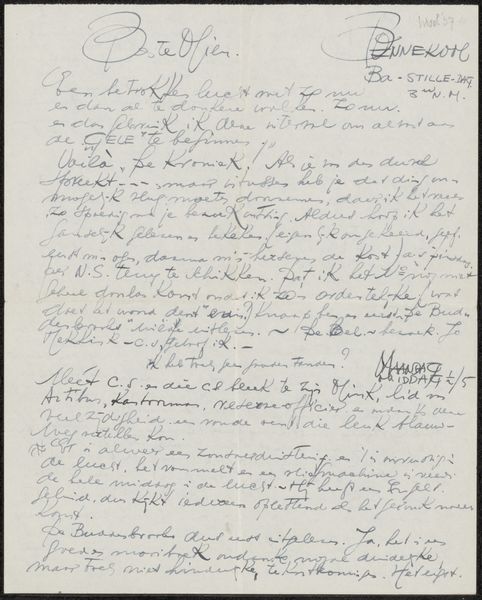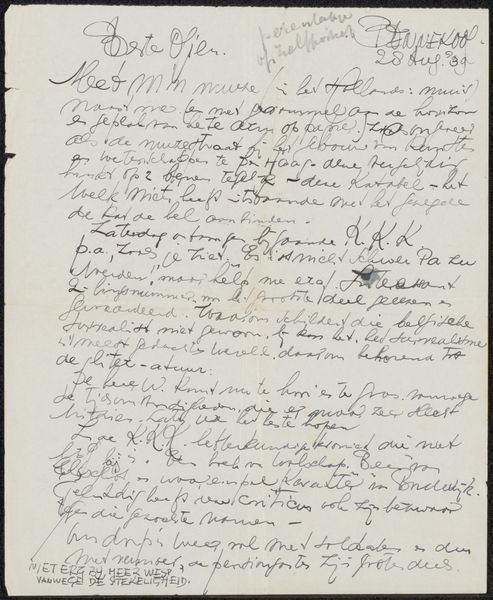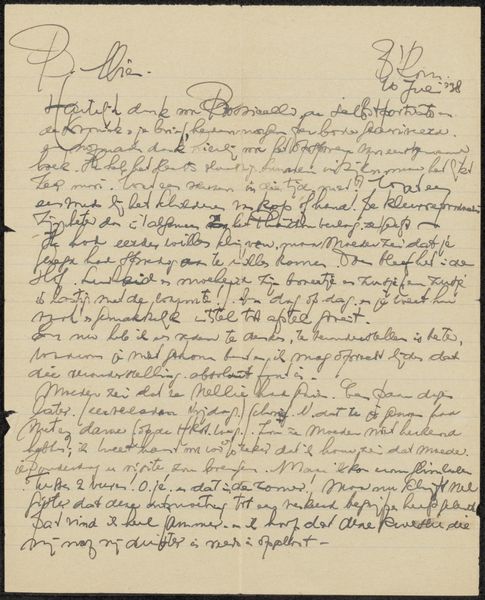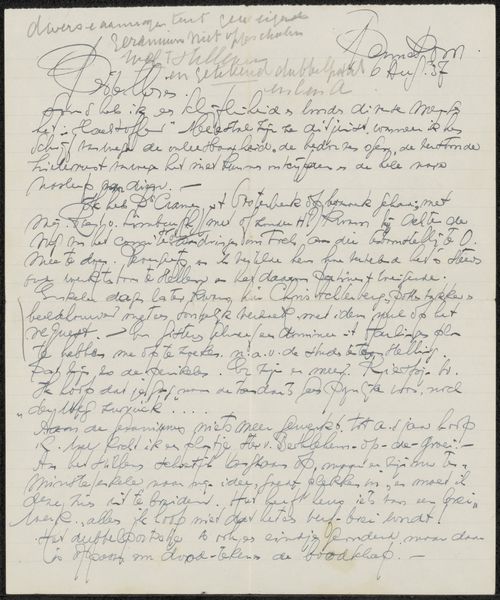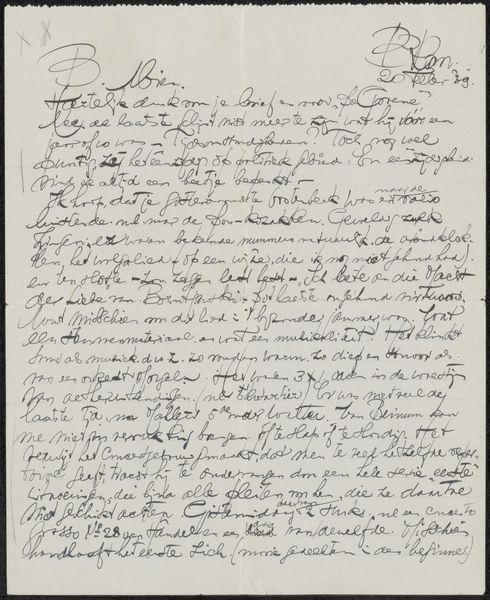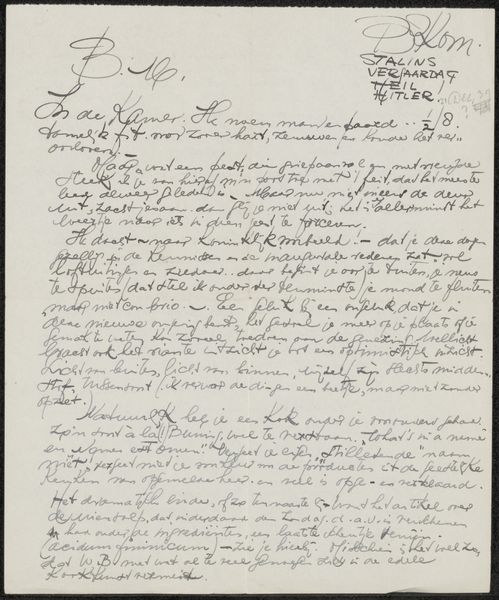
drawing, paper, ink
#
portrait
#
drawing
#
paper
#
ink
#
intimism
Copyright: Rijks Museum: Open Domain
Editor: Okay, next up is a piece titled "Brief aan Mien Cambier van Nooten" by Dick Ket, possibly created between 1940 and 1942. It's an ink drawing on paper. Honestly, looking at all this handwritten text, I feel a sense of intimacy, almost like intruding on a private moment. What do you see in this piece? Curator: I see more than just a private moment; I see a reflection of a life lived under duress. The act of writing, especially during wartime as suggested by the date, becomes an act of resistance, a testament to connection in a world actively trying to isolate individuals. How might the act of corresponding act as an affirmation of identity when one’s sense of self is challenged by external forces? Editor: That's a powerful way to frame it. The letter as resistance…I hadn't considered that. The handwriting is dense, almost claustrophobic, yet the words, even though I can’t read them, feel carefully chosen. Curator: Exactly! The density, perhaps, reflects the limitations placed upon Ket – restrictions on movement, on expression, on connection. Consider his physical health, too, which significantly impacted his life. How does this confinement intersect with Ket’s identity, particularly his queer identity? Editor: So, this letter becomes not just a personal message, but also a symbol of resilience and identity in the face of social and physical constraints. It shows the various dimensions of Ket's existence simultaneously. Curator: Precisely. It highlights how the personal and the political are inextricably linked. By acknowledging these complexities, we can appreciate the rich layers of meaning within what might initially seem like a simple handwritten note. Editor: I see that now. Thanks. Curator: Of course. Art helps us re-interpret historical stories and individual and cultural circumstances, and to bring fresh and nuanced meaning.
Comments
No comments
Be the first to comment and join the conversation on the ultimate creative platform.


